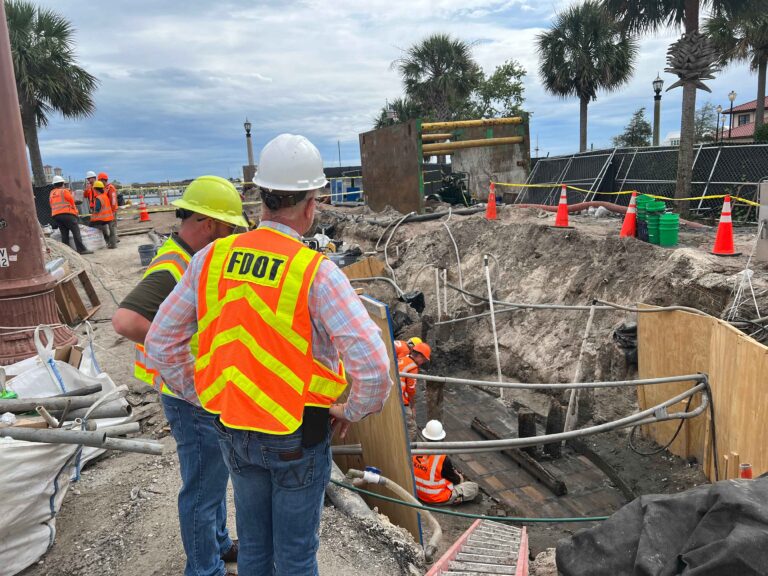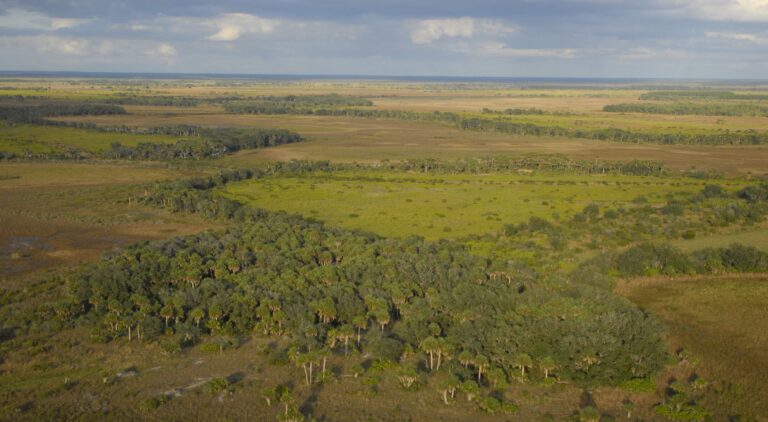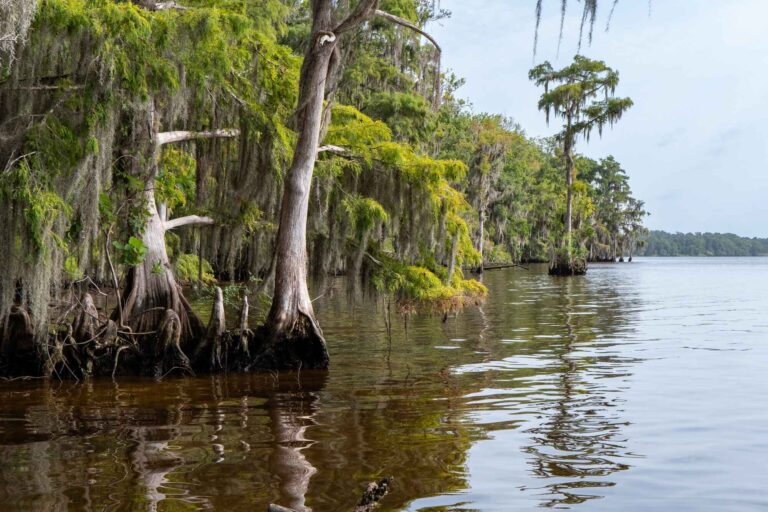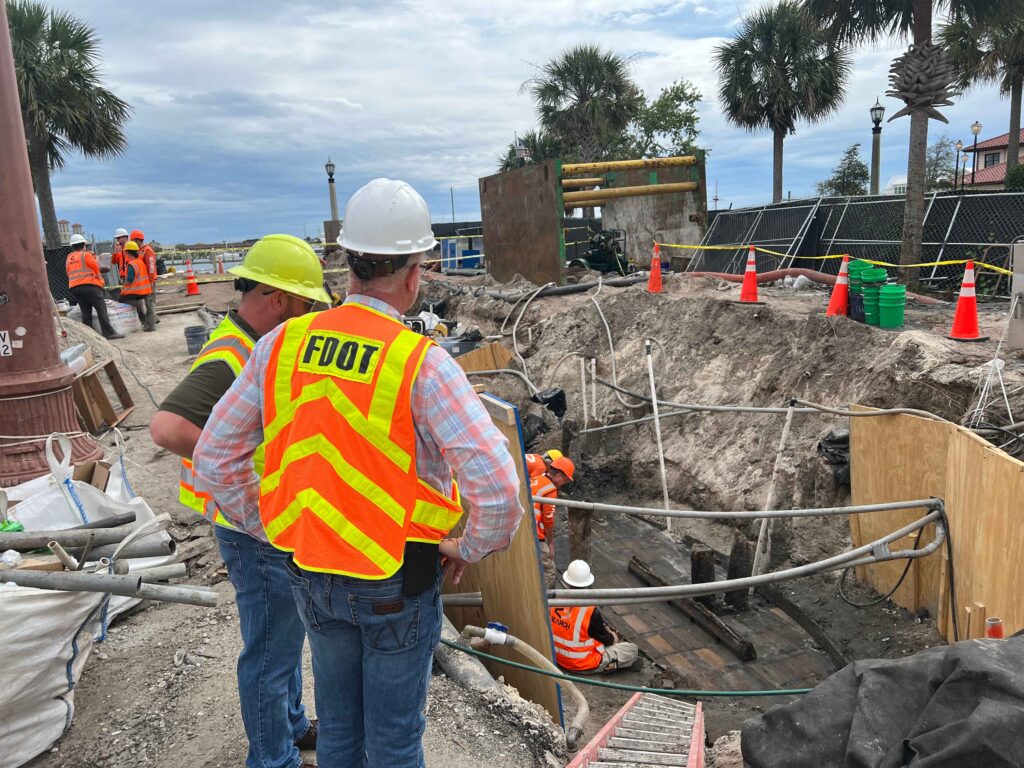
By GREG EVANS
When people think of famous archaeologists, they usually envision Indiana Jones’ daring adventures to find rare artifacts.
They probably don’t think of the Florida Department of Transportation (FDOT) making discovers of historical significance, but that’s exactly what happened in October 2023, when a maintenance crew working on State Road A1A at the King Street drainage project near the Bridge of Lions in St. Augustine made a remarkable discovery. While excavating the site, the crew began to unearth long planks of wood, prompting an immediate halt to the project.
Because so much of Florida has significant historical value, FDOT employs a team of archaeologists who assess every construction and maintenance project. If a project is taking place in historically sensitive areas, like St. Augustine, an archaeologist is on site to monitor everything that goes on during the project. So, when the discovery was made, that archaeologist was able to quickly assess and determine this was not just a piece of wood, but something much more important.
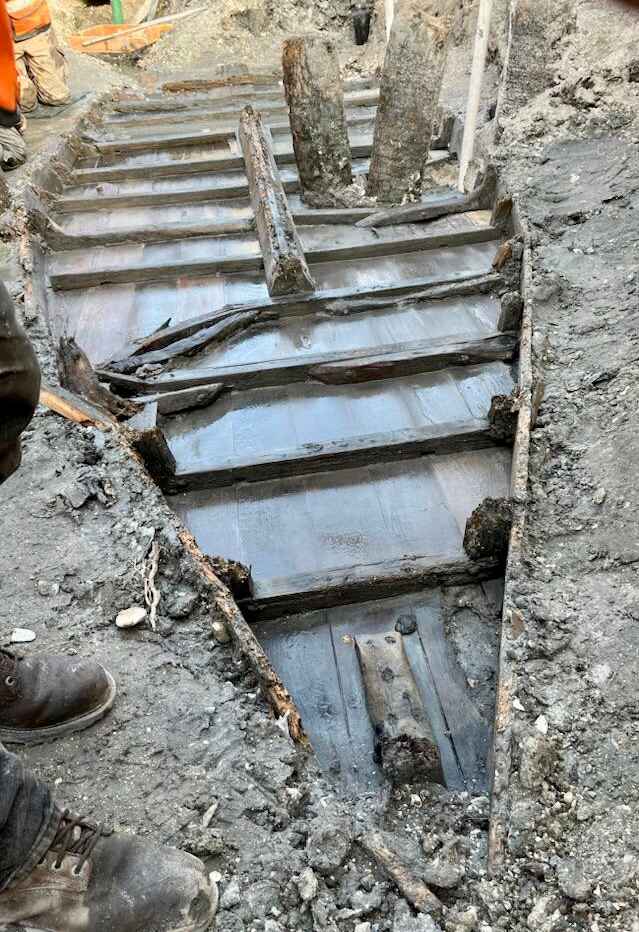
Over the course of a week, FDOT’s Planning and Environmental Management team, in collaboration with Southeastern Archaeological Research, Inc. (SEARCH), undertook a meticulous excavation of the site. Archaeologists and FDOT teams were stunned when their efforts revealed a partially intact 19th-century boat constructed from pine or cedar.
According to Dr. James Delgado from SEARCH, the ship is believed to be a small single-masted, shallow-draft sailing craft that was likely used to extract fish and shellfish from coastal waterways. The vessel may have sunk unexpectedly and over time was covered in sand, silt clay sediment, and shell, sealing it off from oxygen that would have caused the wood to decay. We are grateful to our partners at SEARCH, who assisted FDOT in removing the boat plank-by-plank and then putting it into wet storage to ensure the boat would remain preserved and not deteriorate when exposed to air.
This area, once the waterfront now covered by the existing seawall, served as a vital port where people disembarked from boats to visit the local market. The discovery of the boat and its artifacts not only enriches our understanding of the region’s history but also underscores the social activities and daily life of 19th-century St. Augustine. The unearthed items paint a picture of the era, showcasing the personal belongings of those who lived and worked in the area.
Along with the boat, additional late-1800s artifacts were recovered – leather shoes, glass bottles, an oil lamp, peanut shells, and coins – offering a tangible connection to the past. Archaeologists were able to pinpoint the century that the vessel is from in part because the leather shoe found along with the boat was paired. Shoes were not designed to be worn on a designated foot until the 19th century. The coins narrowed the dates further to between 1868 and 1890.
The boat is currently stored at the St. Augustine Lighthouse Archaeology Maritime Program, where it will be preserved and studied further. This historic discovery highlights the importance of archaeological diligence in modern construction projects, reminding us of the rich history that could lie beneath our feet. FDOT’s commitment to documenting such finds ensures that these treasures are not lost to time but instead contribute to our collective heritage. This exciting find is a testament to the collaborative efforts of work zone and archaeological teams, bringing history to life for all to appreciate.
Greg Evans is District Two Secretary at the Florida Department of Transportation



